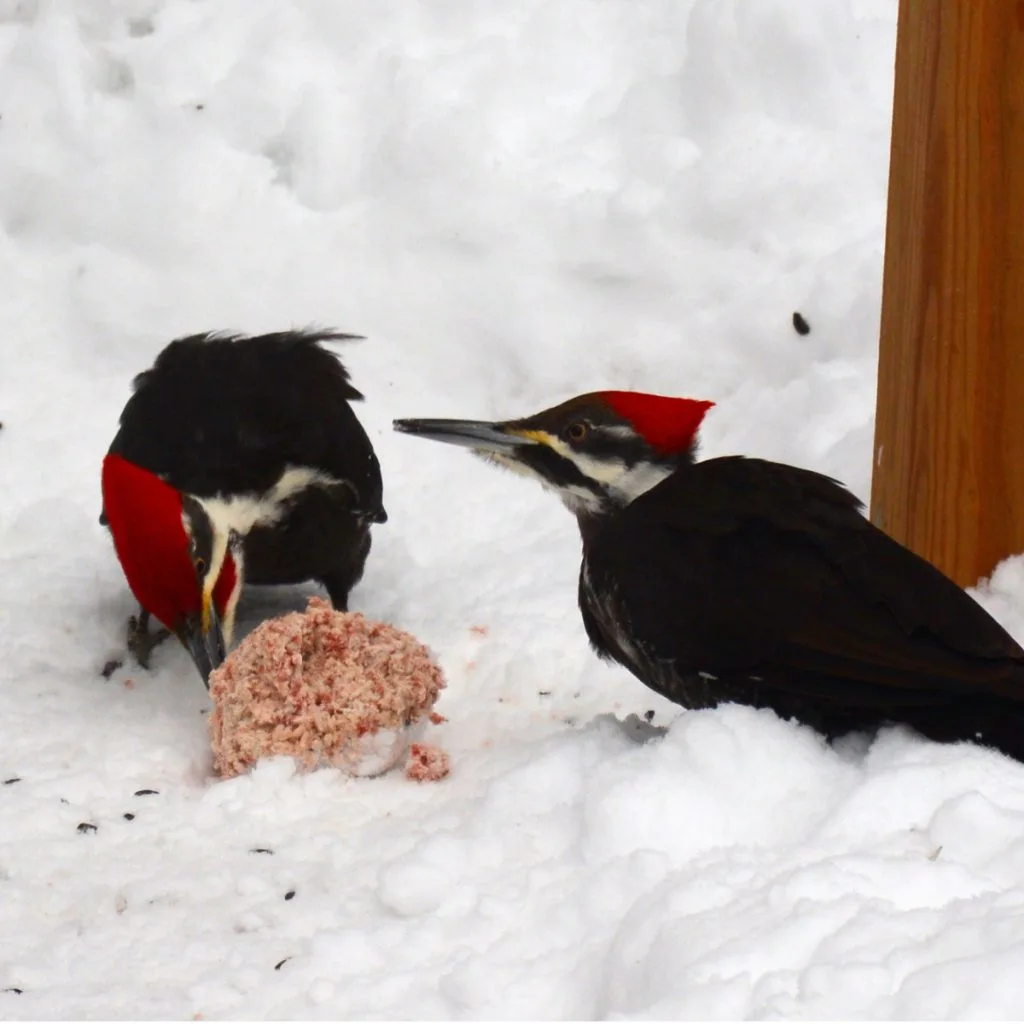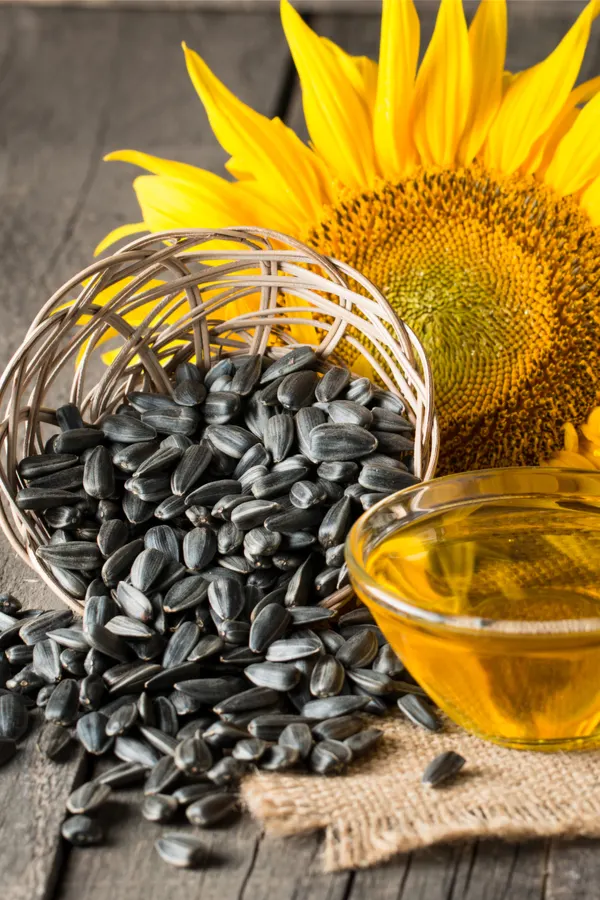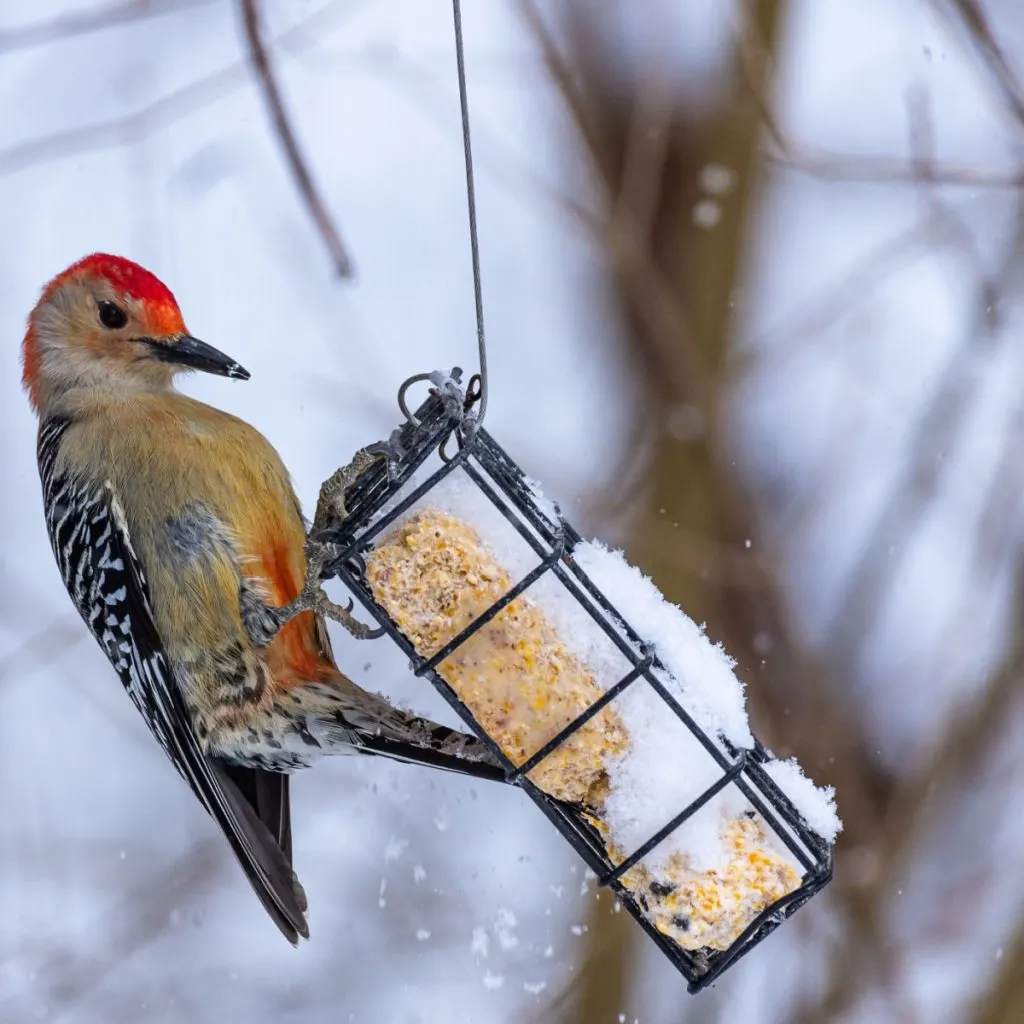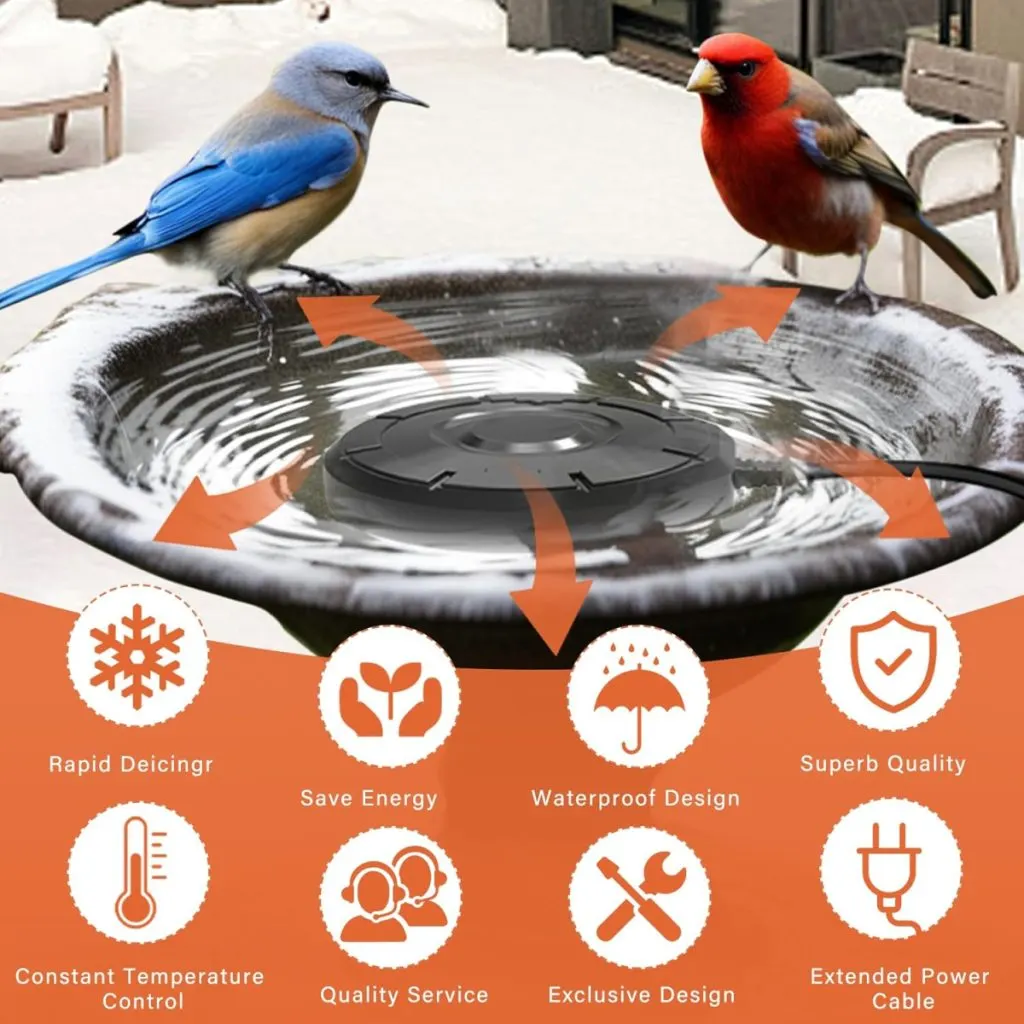Looking for the best ways to feed and attract woodpeckers to your feeders and landscape this winter? Not only is feeding woodpeckers one of the best ways to add life, interest and color to a bleak winter landscape, it can also be huge in helping them survive the tough conditions winter can bring!
When winter rolls around, it can get tough for birds like woodpeckers to find food. Many of the things they usually eat become harder and harder to find. Especially the deeper you head into the long winter months.
Insects, which make up a big part of a woodpeckers diet, either hide deep underground or go dormant when it’s cold. Plus, trees stop producing sap, which can be another source of nutrition for them as well. And unfortunately, any berries or nuts that were left over from fall get buried under snow or eaten by other animals.

One thing is for sure, a lack of food can be tough on woodpeckers. And even more so when temperatures drop really low. Like all overwintering birds, woodpeckers need a high fat, high calorie diet to keep warm. And if food is scarce and the weather bad enough, it can put them in grave danger.
That, of course, is exactly why feeding them can be so helpful to their survival. The good news is that not only is it easy to get woodpeckers to visit and feed in your backyard, there are actually several ways you can do it – and for some of those options – you don’t even need a feeder!
How To Feed & Attract Woodpeckers In Winter
What To Feed Woodpeckers In The Winter
Woodpeckers eat differently depending on the season. During spring and summer, they mostly eat insects and larvae they find in trees. One, because they are abundant. But also because they provide a high calorie and nutrition content that keeps them healthy.
Once it gets cold and those sources are gone, they look for anything and everything to replace those food sources to give them a high fat / high energy diet to keep warm.

Because of that, there is a short list feeds and seeds will work wonders to attract, feed and help woodpeckers make it through winter safely. Here is a look at the best of the best:
Suet
Suet is a high-energy food made from animal fat. It is by far one of the best things you can offer woodpeckers in winter. It is made into cakes or balls and can be placed in a special suet feeder or simply hung from trees in a safe location. Affiliate Link: Suet Plus Variety Suet Cake 6 Pack of Suet Cakes for Wild Bird
Suet helps them stay warm and gives them the energy they need to survive. And do they ever love it. Especially suet cakes with nuts, seeds and fruit mixed in! You can purchase ready-to-go suet cakes from stores, or make your own at home. See: How To Make Homemade Bird Suet – Help Birds Survive Winter!
Peanuts
Peanuts are packed with protein and healthy fats that woodpeckers love. When feeding, it’s best to use unsalted and shelled peanuts (or you can chop them up). You can put them in a special peanut feeder or mix them into suet cakes as well for an added bonus for woodpeckers.

Black Oil Sunflower Seeds
These seeds are a great choice because they’re full of fat and protein. The shells are thin making it easy for woodpeckers to crack them open. They’re a popular choice for a lot of different birds, so you’ll probably attract more than just woodpeckers.
Mealworms
Mealworms are a good source of protein for woodpeckers, especially since the other insects they usually eat are hiding from the cold. You can put mealworms in a tray feeder or mix them into suet for an extra treat.
Dried Fruit
Fruits like raisins, cranberries, and chopped-up apples can be great snacks for woodpeckers. They’re full of natural sugars that can give the birds a quick energy boost. You can put the fruit on a platform feeder or even scatter some pieces on the ground.
Nut Butters
Woodpeckers also enjoy peanut butter or almond butter. Just make sure it’s unsalted and doesn’t have any extra sugar. Spread it directly on tree bark, or mix it into suet to give them something tasty to peck at.
A Few Tips When Feeding – How To Feed & Attract Woodpeckers In Winter
In addition to picking the foods that woodpeckers like, it’s also important to make sure you have a ready to go water supply for them as well.

Finding fresh water is just as hard for birds as finding food in the winter. If you have a birdbath, consider getting a heat coil to put in so it doesn’t freeze over. This way, woodpeckers and other birds can stay hydrated even when it’s freezing outside. Affiliate Link: Birdbath Water Heater Deicer
Winter weather can be tough on feeders. Snow, ice, and rain can make food go bad quickly. That makes it very important to clean your feeders regularly. Also, keep them well-stocked, especially after a snowstorm when birds might be struggling to find food.
Finally, it’s important to note you don’t have to use feeders to attract and feed woodpeckers. In place of feeders, you can smear suet or peanut butter directly onto the bark of trees. This actually is a more natural way for woodpeckers to find food and lets them use their natural foraging skills.
Woodpeckers To Look For At Your Feeders…
One of the most amazing things about feeding and attracting woodpeckers to your winter landscape is seeing all of the different types that just might show up.
With their red heads and striped backs, red-bellied woodpeckers are the easiest to spot and the most well-known. Downy woodpeckers, on the other hand, are the smallest woodpecker type in North America. With a short bill and a black and white feather coat and can be a bit tougher to spot.
There is also the hairy woodpecker, which looks a lot like downy, but is a bit bigger and has a longer bill. And finally, there is the northern flicker. Unlike most woodpeckers, northern flickers often forage on the ground. They have beautiful black markings and bright yellow or red under their wings.
One thing is for sure – no matter if one or all varieties visit – it’s fun looking outside to watch. Here is to feeding and attracting woodpeckers to your yard this winter – and to helping them survive and thrive for years to come!
This Is My Garden
Follow Our Facebook Page For Great Gardening Tips And Advice! This Is My Garden Facebook Page
This Is My Garden is a garden website created by gardeners, for gardeners. Jim and Mary Competti have been writing gardening, DIY and recipe articles and books and speaking for over 15 years from their 46 acre Ohio farm. They publish three articles every week, 52 weeks a year. Sign up today to follow via email, or follow along!
